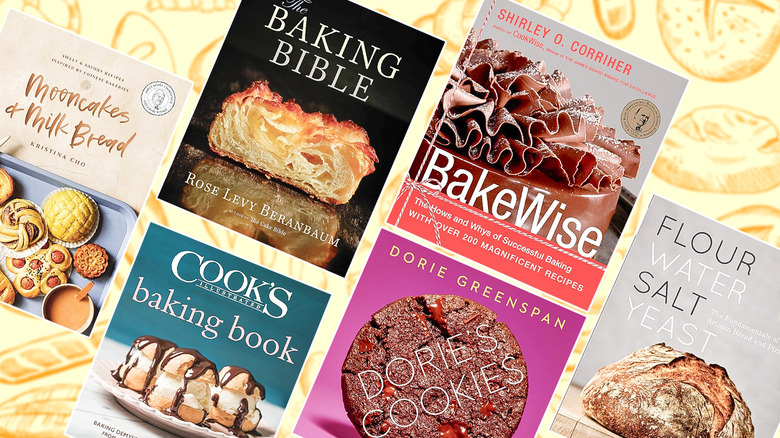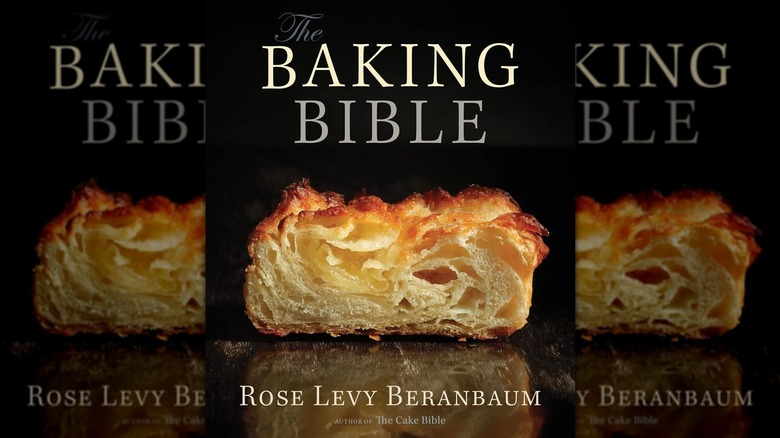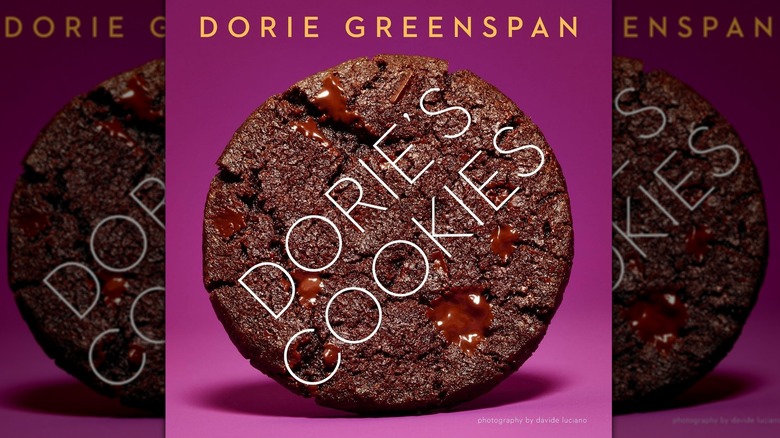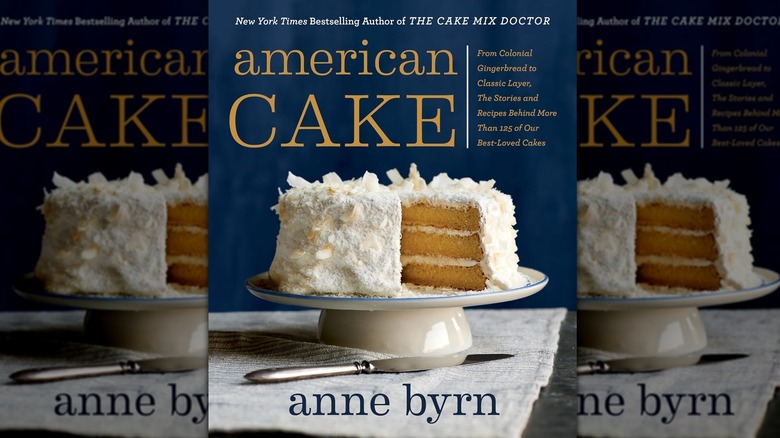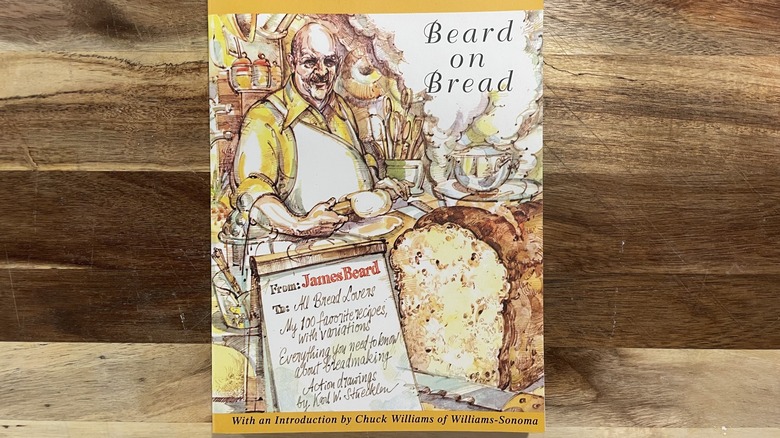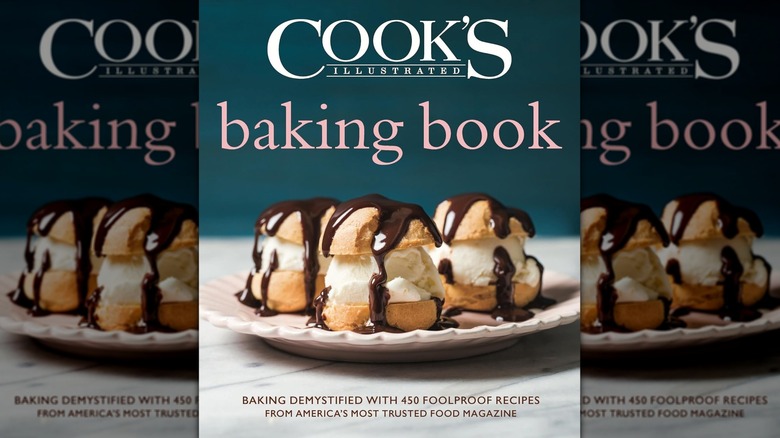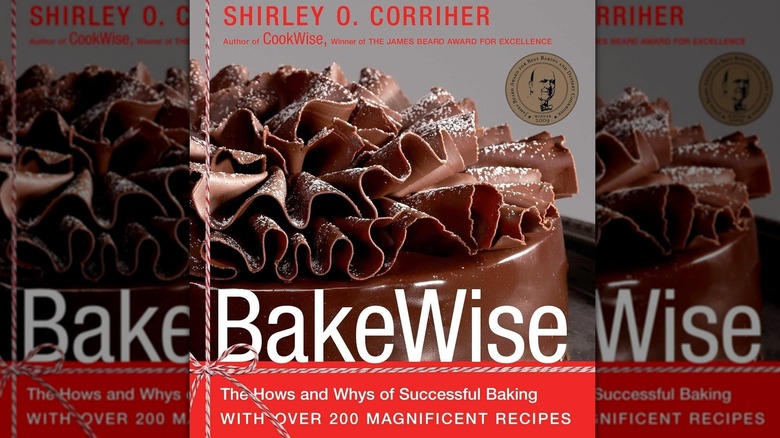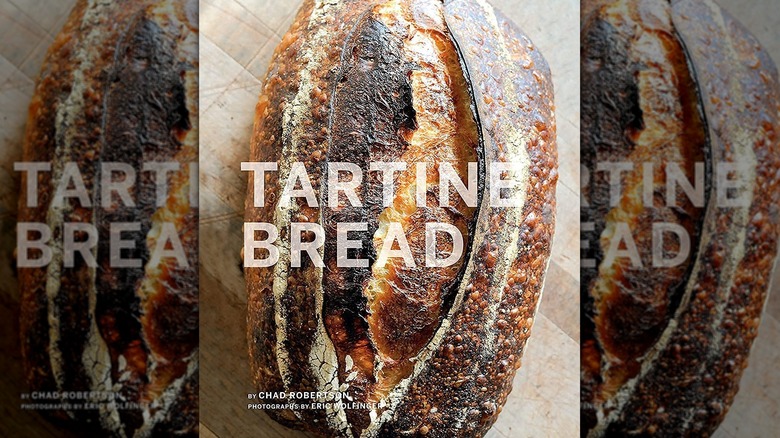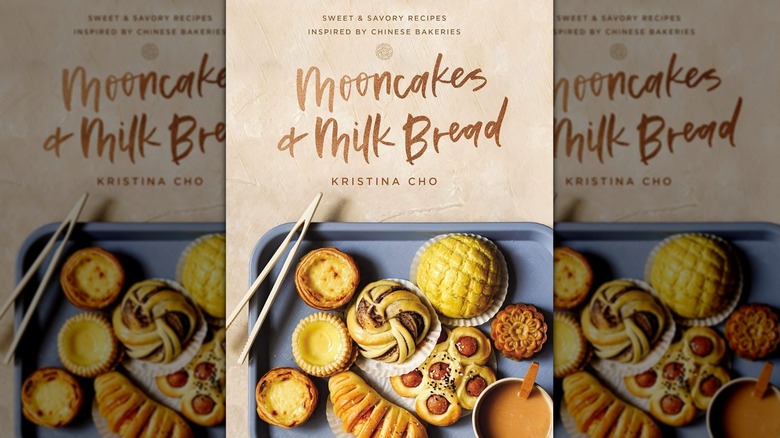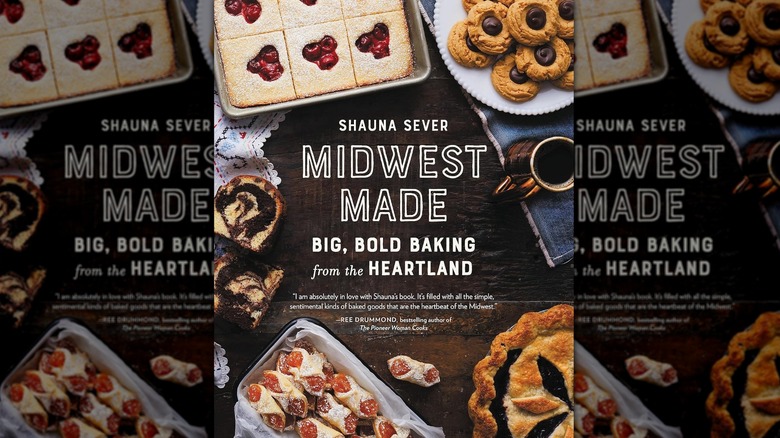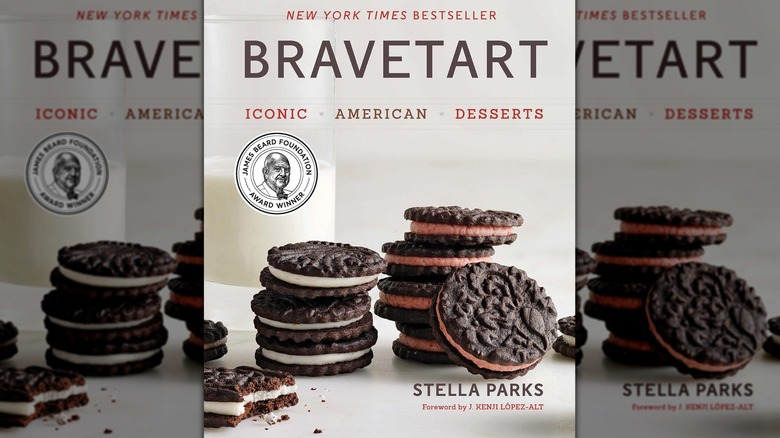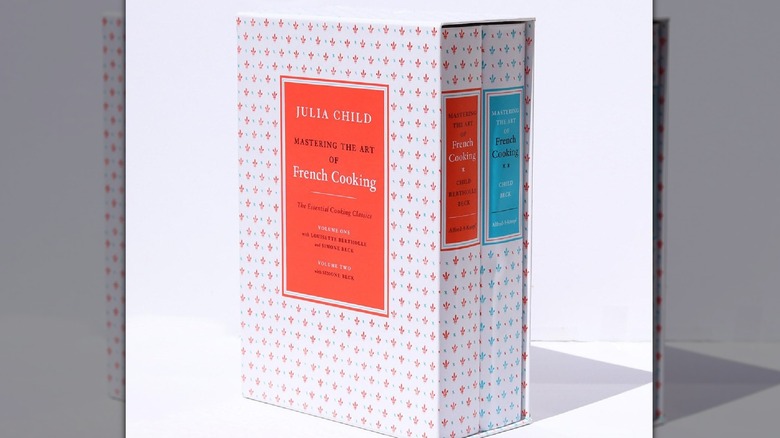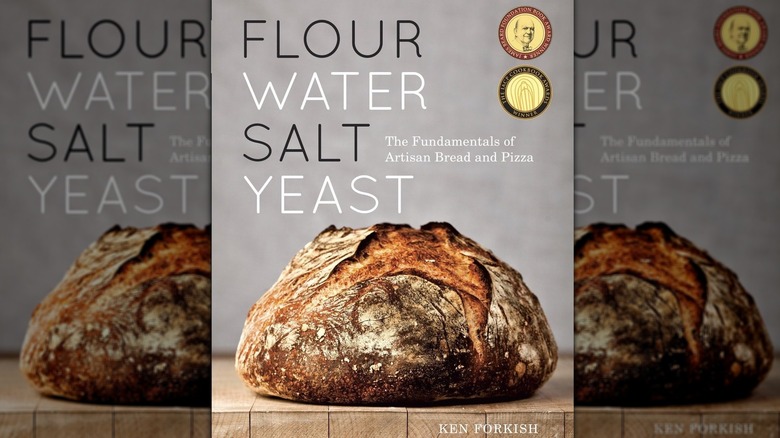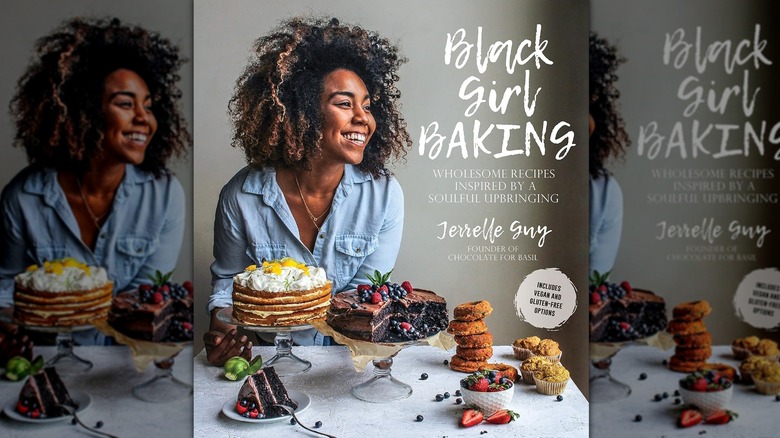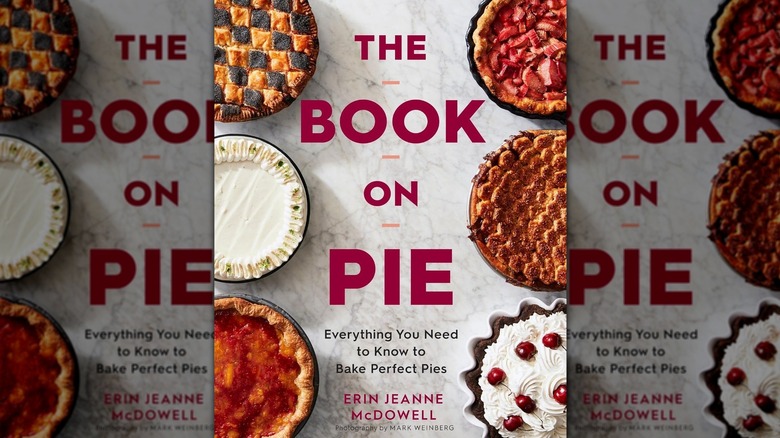The 14 Best Cookbooks Every Baker Needs To Know
With half the world's recipes available on the internet, it may seem counterintuitive to invest in a cookbook these days. What can these expensive door-stoppers do for your craft that a blog can't do? Well, for bakers, think of these cookbooks as representing an oasis of knowledge in a desert of untested, untrustworthy recipes. Online sources do not always go through the vigorous testing or fact checking that a cookbook does. After all, mistakes can be corrected in a jiffy on websites, but the misprinted word can feel as irreversible as etched stone.
Beyond being a trusted resource and a collection of recipes, cookbooks should spark and nourish a bakers creativity, giving someone confidence to play and experiment. That's a hard feat in such a rigid field as baking, so books that can give you that freedom are special indeed.
Who am I? I'm a former managing editor of a baking magazine, who's tested, reviewed, and collected hundreds of baking cookbooks over the years. I'm pulling from my personal library and expertise to explain what cookbooks are worth the money and the shelf space.
The Baking Bible by Rose Levy Beranbaum
Rose Levy Beranbaum first established herself as a baking genius 35 years ago with "The Cake Bible," but for a more complete collection of her wisdom, I recommend "The Baking Bible," as it takes all of her considerable know-how and kicks it into overdrive. This is the woman who introduce the world to reverse creaming, a method of cake mixing where butter and flour are beaten together, creating a divinely tender crumb — you can count on this book delivering plenty of revolutionary technique.
Though the information can feel exhaustive, Beranbaum is never pretentious when doling out advice. Often, it's the simplest of her directives that I find myself turning to over again, like keeping a cooking cutting board (which absorbs flavors from onions and garlic) separate from a baking cutting board (that you'll use to cut odor-sensitive ingredients like chocolate and butter).
Another gem is her description of softened butter, which helped me understand that a properly softened stick of butter isn't a room temperature mushy mess, but a slightly cold stick that you can poke but offers resistance. This leads to way better results when creaming butter and sugar, vastly improving my cakes and cookies. In short, this book made me a fundamentally better baker.
Dorie's Cookies by Dorie Greenspan
Dorie Greenspan has numerous cookbooks to choose from — and they're all fantastic for bakers — but her cookie-centric cookbook was a true trendsetter in the publishing industry. Before every other celebrity baker unveiled their cookie cookbook, "Dorie's Cookies" came first, making a legendary splash with her updated World Peace Cookies recipe. Some other viral recipes that made the rounds include her "Jammers," a streusel and jam-packed tart-cookie hybrid for the ages, and the crisp chocolate-chip studded Mandelbrot, my personal favorite. Beyond being a loving ode to cookies, it also contains the practical information that typical cookbooks often lack.
One key feature is that recipes offer both volume and weight measurements, a detail that serious bakers really appreciate. Second, Greenspan's book celebrates baking creativity, inspiring people to transform her cookies into something more personalized with a "playing around" side column that she includes on many recipes. Other winning details include listing cookie storage info, ingredient choice tips, and streamlined technique (use a muffin pan to make thick, caramelized cookies!) that helps home bakers get professional results. And I'm not the only one who's a fan; the cookbook won the James Beard Award for Best Baking Cookbook in 2017.
American Cake by Anne Byrn
Equal parts history book and cookbook, Anne Byrn's "American Cake" tells the story of the United States through its signature loaf, layer, and frosted cakes, from gingerbread to Red Velvet. While it certainly works for history lovers, the cookbook is even better for bakers looking to add historical and scientific context to techniques and recipes.
For instance, I loved learning that the red velvet cake is an offshoot of the older mahogany cake, which took on a russet hue thanks to natural cocoa powder (aka un-alkalized cocoa) reacting with the acidic buttermilk and baking soda. This reaction fires up the anthocyanin, a compound that helps the cake go a nice ruddy red. Nowadays we add red food coloring to exaggerate the effect, but this bit of science also aided me in understanding the difference between Dutch (alkalized) cocoa powder and natural cocoa powder.
I also treasure the book for resurrecting retro and antique recipes that should never be forgotten. Ermine frosting, the original topper for red velvet cake, is one such recipe — whoever heard of making frosting out of cooked flour and milk? — and the Brooklyn Blackout Cake, with its liberal use of chocolate pudding, is another.
Beard on Bread by James Beard
A slender volume only sporting illustrations, this cookbook doesn't seem to promise much to the modern baker accustomed to beauty shots and step-by-step photos. But it's a classic for a reason, and it's guided numerous generations in making both delectable quick bread and yeasted bread. For the uninitiated, James Beard is a titan in the food world, having written over 20 cookbooks and one of the first chef's to use the medium of television to guide his followers on technique. His 1973 release, "Beard on Bread," is his best cookbook for bakers, especially those dipping into the bread realm.
While the recipes themselves are solid (his English Muffin Bread is still a ground-breaking loaf), the true gift of this cookbook is the helpful tips and techniques packed into the first 30 or so pages. Here, Beard explains the differences between flours, the benefits of using a baking tile, how to score bread, and how to tell when your bread is properly proofed, among other things.
Beard's food writing is the gold standard, at once conversational, instructive, and brimming with his witty personality. For instance, he opens his sourdough recipe by claiming the variety is "much overrated" and that he would much prefer bakers to work on his Buttermilk White Bread instead, yet he follows with a obsessively tested formula you can trust. Perfectly balanced with charm, "Beard on Bread" is as fun to read as it is to bake from.
Cook's Illustrated Baking Book by America's Test Kitchen
I've long been a fan of Cook's Illustrated (a magazine brand managed by America's Test Kitchen) scientific approach to recipe writing, and the "Cook's Illustrated Baking Book" is no exception. This book has gifted me the single best banana bread recipe I've tried, and that's saying something, as I've made over fifty different variations over the years. Is it high-maintenance to microwave bananas and then cook down the liquid to a concentrated juice? Yes, but this brilliant step pays off in every single bite of the banana bread.
Other pearls of wisdom from this cookbook are more straightforward. Take the Brown Sugar Cookie recipe, which flips the basic sugar cookie script by subbing in brown sugar and brown butter into the mix. These simple changes help make one of the best cookies I've ever tasted. And that's just the tip of the iceberg on this collection of superb tried-and-true recipes. As a bonus, though the original copy I own is in black and white, modern bakers can now enjoy the updated version with color photography.
BakeWise by Shirley Corriher
This is the nerd's baking bible, and that's one of the highest compliments I can pay to a cookbook. Obsessively detailed and fact-checked, "BakeWise" by Shirley O. Corriher, a biochemist turned cookbook goddess, is a super sweet reference book for everything from cakes to cookies, with an abundance of tips and science layered into each chapter.
A perfect example of Corriher's specific brand of educational magic is the section devoted to explaining the math and chemistry behind the Great American Pound Cake. A recipe that we often take for granted in the baking repertoire, this cake can be used to understand "baker's math," a tool that can help every home baker take on every other cake thereafter. What's a high ratio cake? What are baker's percentages? This one section will illuminate it all.
The rest of the cookbook is structured the same way, using recipes to demonstrate good baking principles. As a bonus, the recipes are delicious, making each lesson feel like a sweet reward. The aforementioned pound cake is a favorite of mine, as is her Fudgy Brownie recipe, which changed the way I understood other chocolate desserts.
Tartine Bread by Chad Roberts
To say this book (and its namesake bakery) was influential would be an understatement. Practically single-handedly launching the modern sourdough movement, Chad Robertson cookbook "Tartine Bread" has one of the best and most comprehensive sourdough bread recipes out there.
If you're even halfway serious about creating a sourdough starter, Robertson's step-by-step guide is a must. Like a less fussy pet, the sourdough starter needs some basic feeding and maintenance, but the end results, a ripe sourdough starter, will help you create loaf after delicious loaf. Robertson also explains some basic bread making processes, including bulk fermentation, shaping, and scoring.
While these building blocks are helpful, the other recipes shouldn't be ignored. Tartine introduced me to Bostock, the frangipane-filled version of French toast, and Ajo de Blanco, a white, garlicky Gazpacho thickened with almonds and bread. Whatever bread recipe you land on, it'll lead to further yummy adventures.
Mooncakes and Milk Bread by Kristina Cho
Kristina Cho's "Mooncakes and Milk Bread" has a special place in my heart and on my cookbook shelf. What makes this cookbook so wonderful is that it focuses on the highly specific and delicious subject of Chinese and American Chinese bakeries, an East-meets-West style that has captured the hearts of many. It's nostalgic and knowledgeable about recipes that have classically been only available behind the counter.
Kicking off with a fabulous base fluffy milk bread recipe (the king of all white bread recipes, if you ask me), Cho uses that one bread recipe to spin out both sweet and savory creations. My personal favorites that use the milk bread base are her Hotdog Flower Buns, Milk Bread Doughnuts with Salted Egg Yolk Cream (divine), and the Hong Kong-Style French Toast, which is stuffed with peanut butter and smothered in sweetened condensed milk.
My personal obsession with Cho's milk bread aside, the book is also great for baker's wanting to learn the ins and outs of pleating and shaping savory dumplings, making steamed buns, and executing the minutely detailed mooncakes, a delicacy enjoyed during the Mid-Autumn Festival. For those looking to expand their baking horizons, "Mooncakes and Milk Bread" is a gorgeous place to start.
Midwest Made by Shauna Sever
For those that love the simple comforts offered by community cookbooks, Shauna Sever's "Midwest Made" will offer you the same joys, only adapted for our modern ingredients and technology. This cookbook is billed as a dedicated look at Midwest baking, particularly the baking brought there by German, Scandinavian, Polish, Italian, and French immigrants. To pull it together, Sever combed through many an American heartland library, collecting quaint and clever recipes from numerous community cookbooks as well as from her own family records.
Unlike some of the other books on this list, "Midwest Made" isn't complicated or technical. It's just delicious. I can turn out her sweet and chewy recipe for Scotcheroos in a jiffy, and it's almost ludicrously easy for me to make her Donut Loaf, a nutmeg-scented treat that gets coated in melted butter and powdered sugar for peak decadence. No, difficulty isn't the name of the game here. Instead, it's the many simple joys one can get from baking a recipe that's been passed down through generations. For that reason, it deserves a spot on your shelf.
BraveTart by Stella Parks
Another icon in the history-meets-cookbook category, "BraveTart" has essential recipes for everything from Devil's Food Cake to Oreos. The custom variations she suggests make this book particularly special, enabling bakers to get creative in what is usually a highly rigid and scientific field. Parks loves to play with the classics herself, so she's quick to encourage other bakers to break the mold.
Great examples of this maverick approach to baking include her recipe for Red (Wine) Velvet Cake, which adds rich red wine to the mix, and Honey-Roasted Peanut Butter Cookies, a pumped up version of the original courtesy of crunchy honey-roasted peanuts. I have a particular obsession with her blondie recipe, which makes use of two of my favorite ingredients, malted milk powder and caramelized white chocolate, and her revolutionary Roasted Sugar, which has become my favorite secret weapon for both cookies and whiskey sour cocktails.
But it's her loving attention to cornerstone recipes and baking fundamentals that have really shaped me as a baker. Parks has taught me how to make my first batch of marshmallows, temper chocolate, caramelize sugar, and whip stabilized whipped cream. And she gave me my favorite nerdy expression to explain to people why then need to use a scale when baking: "A scale lets you see the Matrix."
Mastering the Art of French Cooking by Julia Child
If you're looking to get a jumpstart in French patisserie, Julia Child should always be your first stop. "Volume 1 and 2 of Mastering the Art of French Cooking" will not only give you plenty of savory recipes that have withstood the test of time, but you'll also get Child's signature wisdom on dishes like clafoutis, crêpes, and Babas au Rhum.
My favorite quality of this cookbook is its ability to bring inside-baseball French technique and equipment to the home kitchen. The benefits of using copper bowls and pans, ways to shape and bake homemade baguettes, and the basics of lamination can all be found within these tomes. We take some of this knowledge for granted, but I still find it helpful.
The cookbook also benefits from the cool candor of Child herself. Bakers that would be too intimidated try something like a soufflé are encouraged Child's blasé attitude, noting that "you will get a soufflé of some sort no matter what you do," even if it isn't "magnificent," like a proper one is. Child always approached food with a fearlessness that disdained the pains of failure. Flat cakes and curdled buttercreams are a key part of any bakers journey, a fact that Child knew well.
Flour Water Salt Yeast by Ken Forkish
"Flour Water Salt Yeast," by Ken Forkish contains the holy grail of bread recipes — in my humble opinion. Forkish, a professional baker based in Portland, Oregon, introduced a whole generation of bakers to the skills of autolyse and fermentation, making better tasting bread possible at home.
One of my favorite features is that many recipes come complete with schedules, helping bakers plan out the entire fermentation project. Forkish was the baker who helped me understand that time is essentially an extra ingredient in bread making. Sure, we need our dough to proof to get air bubbles and lift, but this ignores all the incredible flavor that happens when dough is allowed to properly ferment. Forkish's recipes will convert any nonbeliever on this point.
Pizza fanatics should also take a look at his crust recipe. A gold-standard for me and other home chefs, Forkish's Pizza Margherita was my first foray into the world of pizza, and it gave me the confidence and delicious results to encourage my homemade pizza adventures in the future.
Black Girl Baking by Jerrelle Guy
If you're looking for either an intro to diet-sensitive baking or a masterclass in creativity, "Black Girl Baking" by Jerrelle Guy is the book to grab. In an interesting twist on the cookbook formula, Guy devotes a chapter to each of the five senses, encapsulating her well-rounded approach to baking.
I will forever be grateful to Guy for introducing me to the wonders of Banana Bread Croutons, the best use for leftover banana bread that I've ever discovered, and Halva and Cardamom Biscotti, which showed me that I can mix chopped halva candy into anything. The magic here is that she plays with ingredients that excite the palate but aren't necessarily associated with the realm of baking, like miso, kombucha, and lemongrass.
The most surprising element of this cookbook was it's ability to open my mind to the delights of gluten-free and vegan baking. One such triumph is her gluten-free Macadamia Browned Butter Cashew Cookie Dough recipe that is better, scoop for scoop, than ice cream. Beyond that, I've come to love the vegan and gluten-free Sea Salt Butterscotch Tart for introducing me to the many sweet ways coconut oil, sugar, and butter can improve my baking.
The Book on Pie by Erin Jeanne McDowell
Pie is a different beast entirely. The blend of tender pie dough and juicy filling can prove particularly difficult for even an experienced pastry chef. Luckily, Erin Jeanne McDowell has written a veritable bible on the subject. In "The Book on Pie," McDowell gives the reader everything they could want, from creative recipes to expert technique.
For the sweet section, McDowell splits up the pies into fruit, custard, and cream/chiffon sections. My own successes include the Butterscotch Apple Pie, a blend of apple pie filling and homemade butterscotch pudding, and the Apple Butter Pie, where apple butter becomes the custardy interior of the pie. The later pie changed my whole outlook on pie making, giving my confidence to venture further into the realm of pastry. My favorite breakthrough in this section is her meringue pie crust, an idea so brilliant I was immediately struck with envy.
More impressive than these sweet creations is McDowell's inventive savory pie section. Harkening back to the ancient side of pie where it existed as a meal in itself, these recipes range from the traditional (Chicken Pot Slab Pie) to the wild and wonderful (Smoked Salmon Tart with "Everything" Pie Crust).
